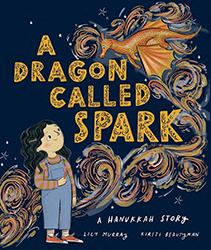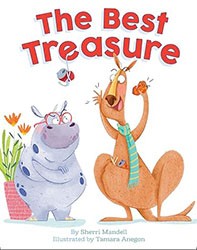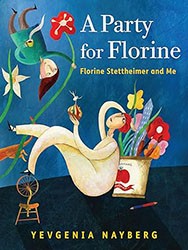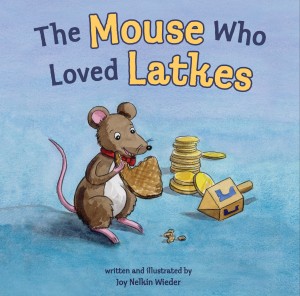This collaboration between iconic author Rosemary Wells and illustrator Jerry Pinkney is as welcome as the chair of the title, although the recent loss of Pinkney is a sad context for its publication. Wells and Pinkney have created a deeply thoughtful celebration of immigrants and the welcome that our country, at its best, has offered them. Partly based on the author’s own family’s history, this is the story of a simple, but beautifully carved, chair that passes from one family to another across national boundaries. The chair provides comfort to all its recipients equally but also acquires the particular mark of different cultures through different words meaning “welcome.”
The book begins with Wells’s great-great-grandfather, Sam Seigbert, a nineteenth-century German Jew who is gifted in carving wood but less inclined to study Torah, as his father would prefer. Unlike all the other immigrants in the book, Sam’s choice to leave his native country is attributed to his personal situation, not to persecution or poverty. (Wells even specifies in her informative author’s note that Sam’s motivation to leave Bavaria was “to escape religious conformity.”) Yet, in the text, she reports how Sam chose to cut off his “sidelocks” (payess) in order to avoid the bullying inflicted on him as a Jew. This is the origin of the welcome chair; when Sam arrives in America, he apprentices as a carpenter, and creates a cherrywood rocker engraved with the German word for “welcome.”
The chair is a tangible object but also a totem, first finding its way within Sam’s family, where a Hebrew engraving for “welcome” greets the birth of a son. But Wells also emphasizes the universality of the chair’s message, as its concept embraces people from Ireland, the Dominican Republic, Haiti, and Syria. These refugees are not generic symbols; numerous small details give their stories depth, from a seamstress who marries a doorman at the Plaza Hotel to a young girl receiving the generous gift of an American Girl doll. Wells skillfully weaves historical events and locations into her narrative about the chair created by one immigrant artisan in his new home.
Pinkney’s artwork glows with color and carefully deployed lines, all suffused with his signature sensitivity. Fortunately, his illustrator’s note informs readers about his methods and media. Extensive research helped him to accurately portray different times and places. Using color pencils, pastels, and watercolors, each scene represents a lifelike and expressive interaction with history. When Sam falls in love with Ruth, whose clubfoot would have made marriage back in the old country virtually impossible, he engineers a special wool-lined boot for her with wheels to enable mobility. Pinkney depicts Sam lovingly fitting it on her, alluding to the tale of Cinderella with a realistic setting. Sam’s carving tools and stray wood shavings sit on a shelf in light colors, while Ruth’s bright blue dress and Sam’s red bandanna are the first elements to meet the reader’s eye.
There are many contemporary children’s books about the struggles and triumphs of immigrants. This one, a highly recommended book by two of the most distinguished talents in their fields, brings a real sense of warmth and respect to the American tale of welcoming strangers. Their collaboration offers young readers new insights into history and unmatched visual beauty.
Emily Schneider writes about literature, feminism, and culture for Tablet, The Forward, The Horn Book, and other publications, and writes about children’s books on her blog. She has a Ph.D. in Romance Languages and Literatures.





